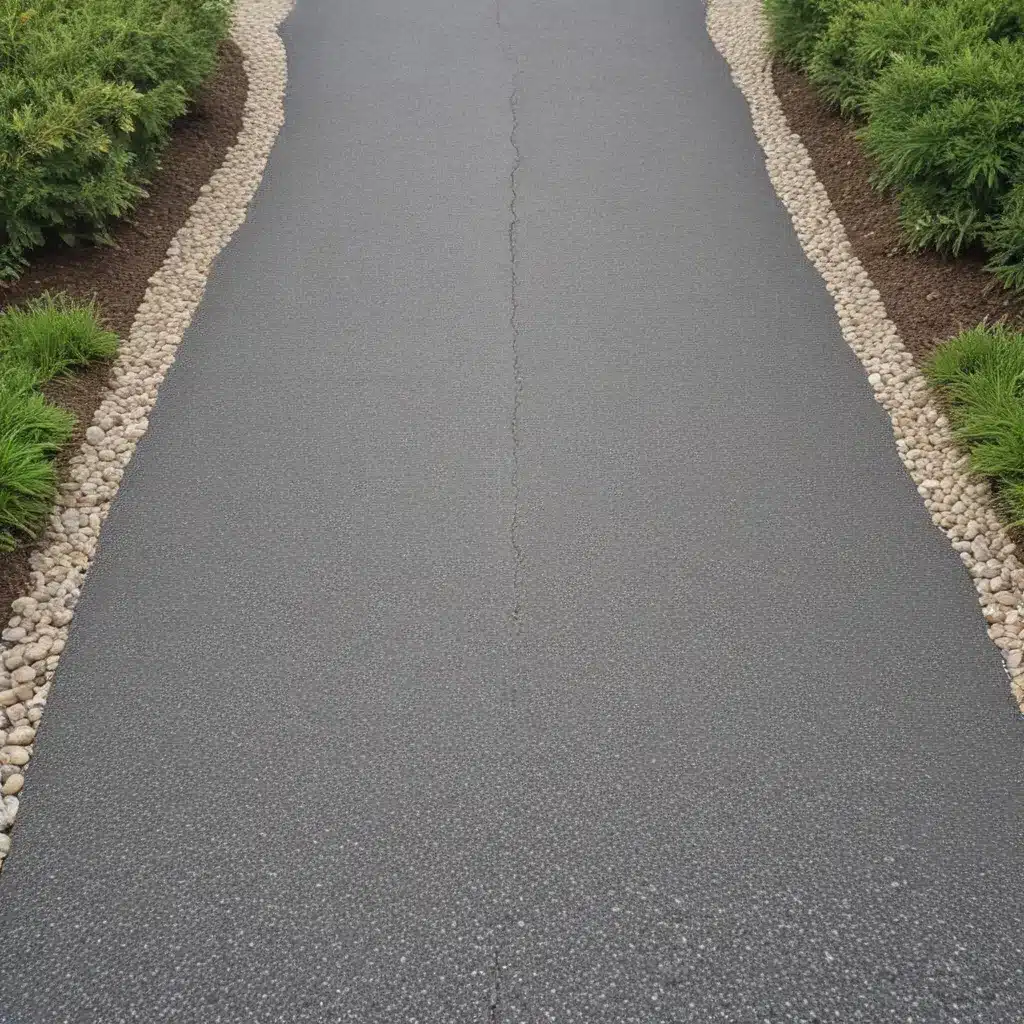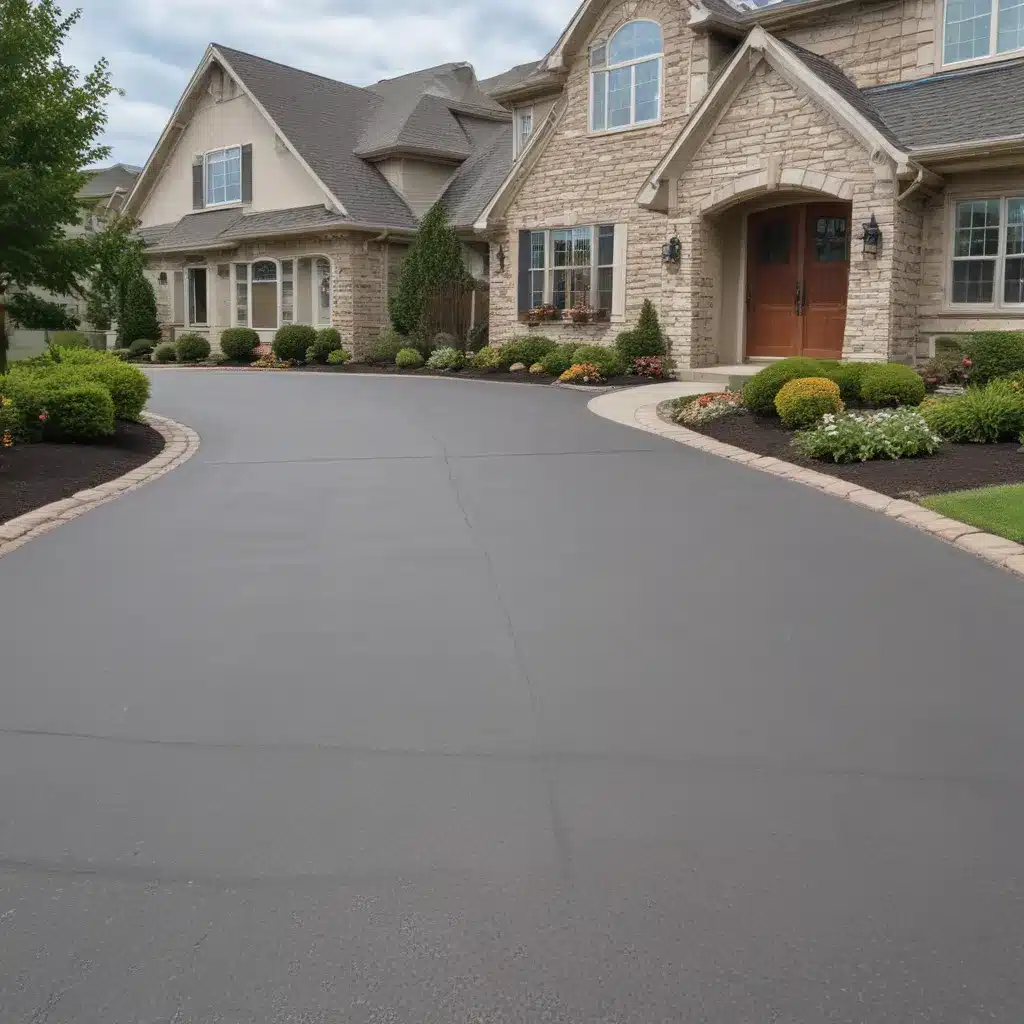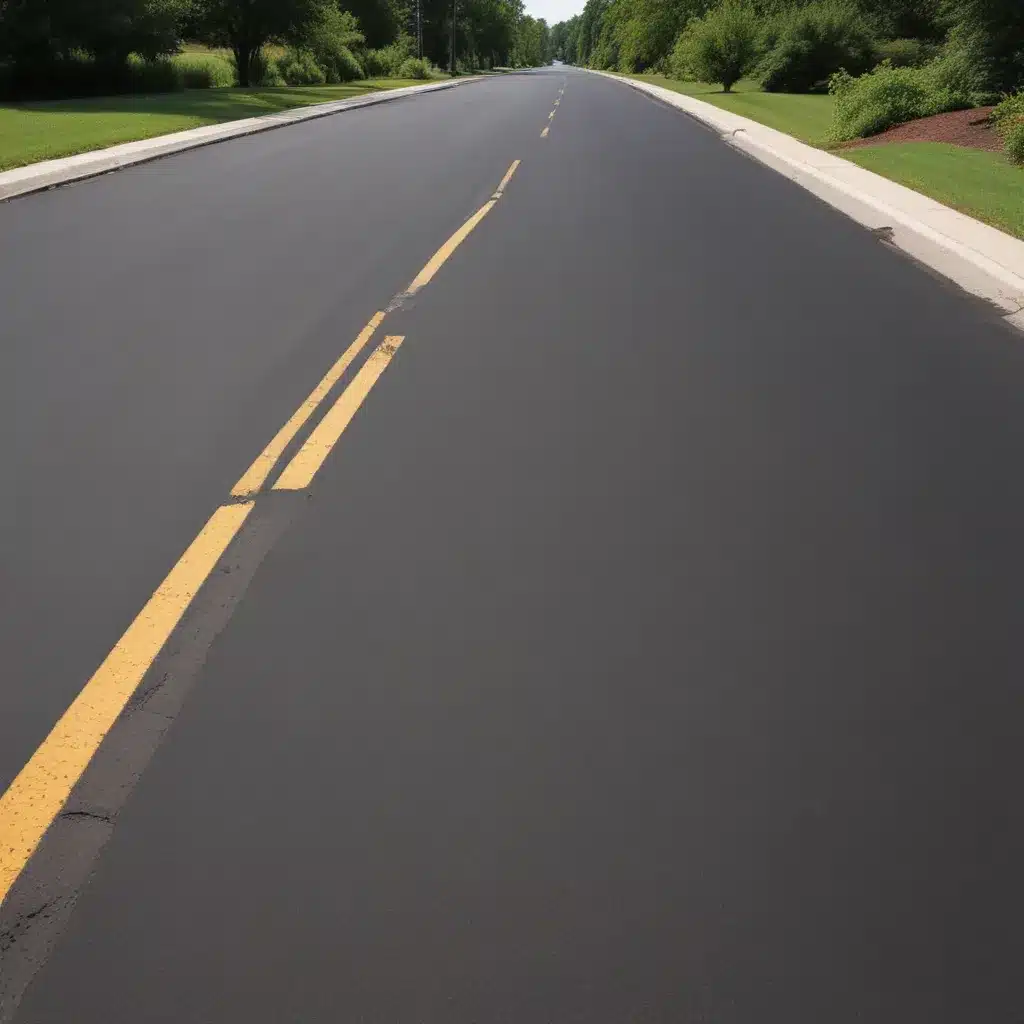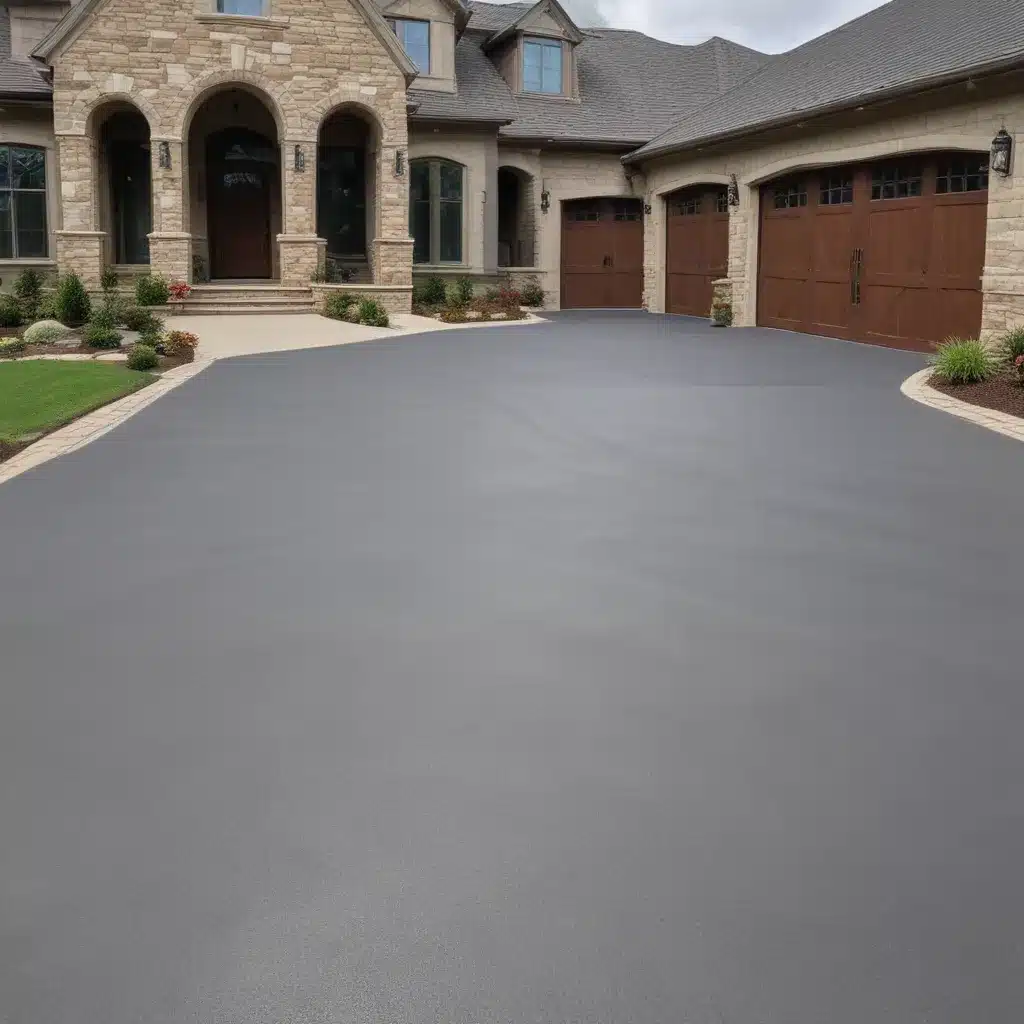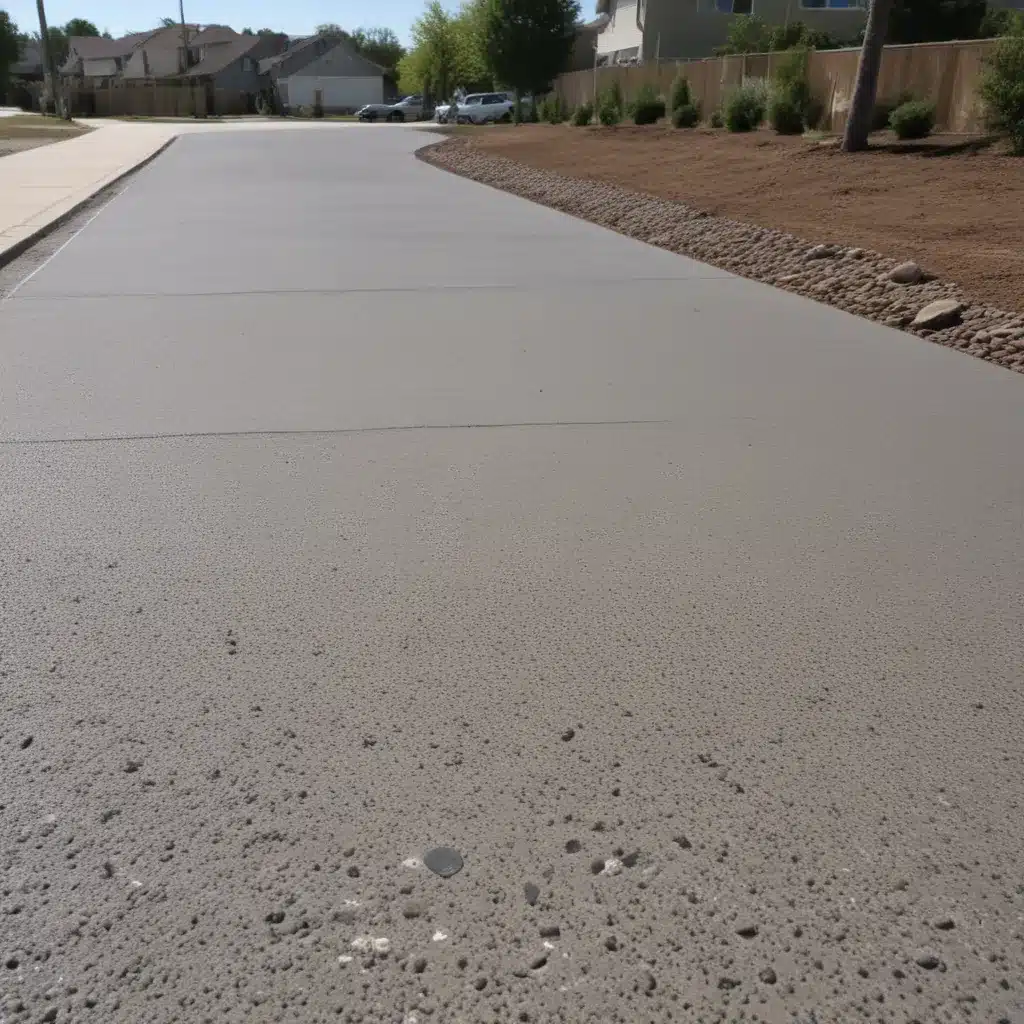Navigating the Gravel Driveway Conundrum
Ah, the humble gravel driveway – a classic choice that’s stood the test of time. But let me tell you, my friends, it’s no walk in the park keeping these pebble-laden paths in pristine condition. As the owner of a driveway services company, I’ve seen it all – from the blissful serenity of freshly laid gravel to the chaotic mess of a driveway that’s seen better days.
So, buckle up, because we’re about to embark on a journey through the highs and lows of gravel driveway ownership. Whether you’re a seasoned pro or just dipping your toes into the world of driveway maintenance, I’ve got a few tricks up my sleeve to help you navigate the gridlock on gravel.
The Allure of Gravel Driveways
Let’s start by exploring the reasons why gravel driveways have remained a popular choice for homeowners. For starters, they offer a classic, rustic aesthetic that can complement a wide range of architectural styles. Imagine a charming country cottage with a winding gravel path leading up to the front door – it’s a vision of pastoral perfection, is it not?
But the appeal of gravel driveways extends far beyond their aesthetic charm. They’re also relatively inexpensive to install, making them an attractive option for homeowners on a budget. And let’s not forget the practical benefits – gravel driveways are highly permeable, which means they can help with drainage and reduce the risk of standing water during heavy rain.
The Downside of Gravel Driveways
Ah, but with every silver lining, there’s a cloud lurking nearby. While gravel driveways may have their perks, they also come with their fair share of challenges. Chief among them is the issue of maintenance – these pebble-laden pathways require regular attention to keep them looking their best.
For starters, gravel has a tendency to shift and disperse over time, creating unsightly ruts and uneven surfaces. This can not only be a tripping hazard but also make it a pain to navigate with your car. And let’s not forget about the dreaded weed invasion – those pesky plants have a way of worming their way through the gravel, turning your once-pristine driveway into a verdant jungle.
Maintaining the Gravel Grind
Okay, so we’ve covered the pros and cons of gravel driveways, but how do you actually keep them in tip-top shape? Well, my friends, it’s going to take some elbow grease, but I promise it’ll be worth it in the end.
One of the most crucial steps in maintaining a gravel driveway is regular raking and resurfacing. This helps to redistribute the gravel evenly, filling in any gaps or ruts that may have formed. And don’t forget to keep an eye out for those pesky weeds – a quick dose of herbicide or a good old-fashioned hand-pulling session can work wonders.
But the real secret to a well-maintained gravel driveway? Patience and persistence. These pathways require constant attention, but trust me, the effort is worth it. Imagine the satisfaction of stepping out onto a freshly groomed gravel driveway, with nary a weed or rut in sight. It’s the kind of feeling that makes all the hard work worthwhile.
The Art of Gravel Driveway Resurfacing
Now, let’s talk about the big guns – gravel driveway resurfacing. This is the heavy-duty solution for a driveway that’s seen better days. It involves removing the existing gravel, leveling the underlying surface, and laying down a fresh layer of high-quality gravel.
The key to successful resurfacing is to use the right type of gravel. You’ll want to opt for a blend that’s hardy, angular, and able to lock together to create a sturdy, long-lasting surface. And don’t forget to factor in the depth – most experts recommend a minimum of 4 inches of compacted gravel for optimal performance.
But the real magic happens in the compaction process. By using a specialized roller or plate compactor, you can create a solid, stable base that’s resistant to shifting and erosion. It’s like building a rock-solid foundation for your driveway, and trust me, it’s worth the effort.
The Pebble-Paved Path to Perfection
Alright, so we’ve covered the pros and cons of gravel driveways, as well as the ins and outs of maintaining them. But what about those pesky little details that can make all the difference?
For starters, let’s talk about the importance of edging. By installing sturdy concrete or metal edging along the perimeter of your driveway, you can help to contain the gravel and prevent it from spilling out onto your lawn or the surrounding area. Trust me, it’s a game-changer when it comes to keeping your driveway looking its best.
And speaking of appearances, don’t forget the power of regular cleaning and weeding. A quick sweep with a sturdy broom can do wonders for keeping your gravel driveway looking tidy and presentable. And those weeds? Well, a little elbow grease and some good ol’ fashioned weed-pulling can keep them at bay.
But perhaps the most important tip of all? Be patient and persistent. Maintaining a gravel driveway is an ongoing process, but with a little TLC and a whole lot of determination, you can turn that pebble-paved path into a true masterpiece.
Gravel Driveway Case Studies: Real-Life Triumphs and Tribulations
As the owner of a driveway services company, I’ve had the privilege of working with a wide range of clients, each with their own unique gravel driveway challenges. And let me tell you, the stories I could tell would make your head spin.
Take, for instance, the case of the Smiths, a lovely couple who had recently moved into a charming country cottage with a gravel driveway that was more akin to a moonscape than a driveway. When I first laid eyes on it, I have to admit, I let out a low whistle – it was going to take some serious elbow grease to whip that driveway back into shape.
But the Smiths were determined, and with a little guidance from yours truly, they rolled up their sleeves and got to work. They meticulously raked, resurfaced, and edged their way to driveway perfection, and let me tell you, the end result was nothing short of a work of art.
On the flip side, there’s the cautionary tale of the Joneses, who decided to forego regular maintenance in favor of a “let it be” approach. Big mistake. Within a few short years, their once-pristine gravel driveway had morphed into a tangled web of weeds and ruts, making it a veritable obstacle course for anyone attempting to navigate it.
Needless to say, it took a significant investment of time and resources to bring that driveway back to life. But the Joneses learned their lesson the hard way – gravel driveways may seem low-maintenance, but they require constant attention to stay in top shape.
The Final Stretch: Conquering the Gravel Driveway Challenge
Well, my friends, we’ve covered a lot of ground here, haven’t we? From the allure of gravel driveways to the nitty-gritty of maintenance, we’ve tackled it all. And let me tell you, it’s been quite the journey.
But as we reach the finish line, I can’t help but feel a sense of pride and accomplishment. After all, conquering the gravel driveway challenge is no easy feat. It takes dedication, elbow grease, and a healthy dose of patience – qualities that I like to think I’ve mastered over the years.
So, if you’re one of the many homeowners out there grappling with the ups and downs of gravel driveway ownership, take heart. With the right approach and a little guidance from the experts (ahem, that would be me), you too can turn your pebble-paved path into a thing of beauty.
And who knows, maybe one day, you’ll be regaling your friends and neighbors with tales of your own gravel driveway triumphs, just like I’ve done here. After all, there’s nothing quite like the satisfaction of a job well done – especially when it involves taming the wild and woolly world of gravel.
So, what are you waiting for? Grab your rake, your broom, and your best pair of work boots, and let’s get to work. The gravel driveway of your dreams is just within reach.

